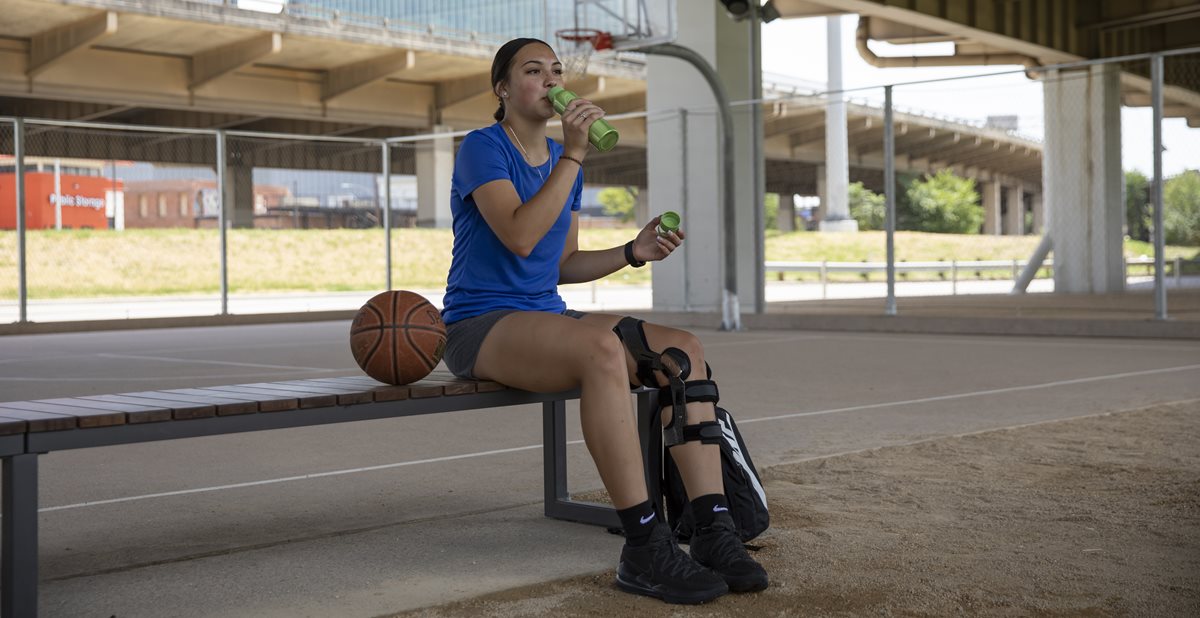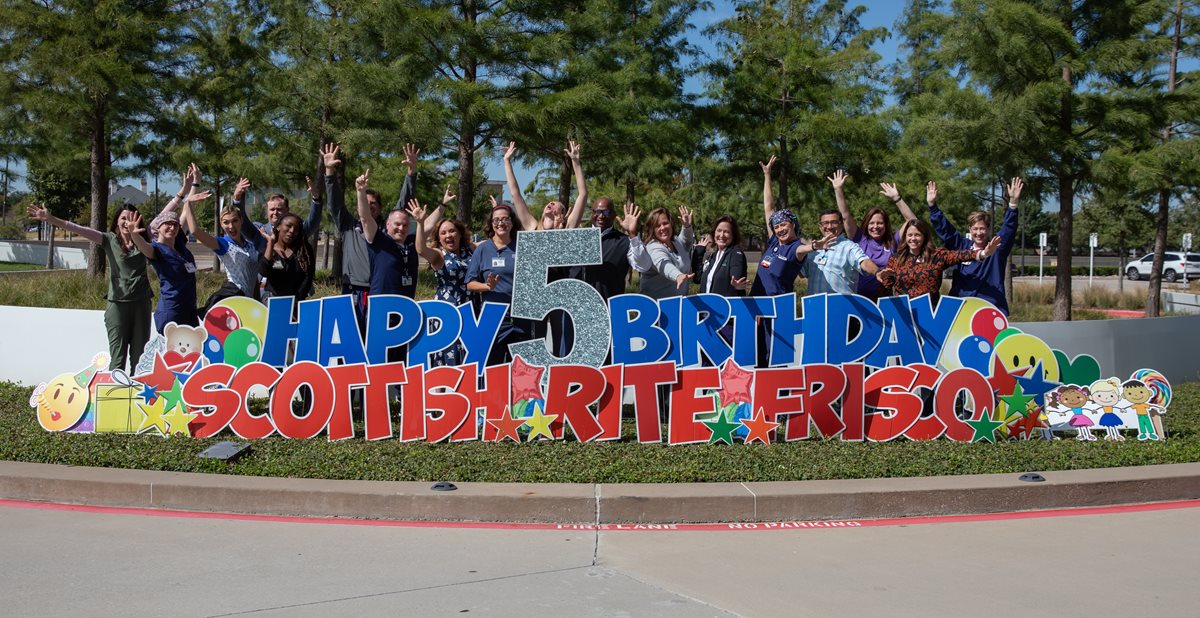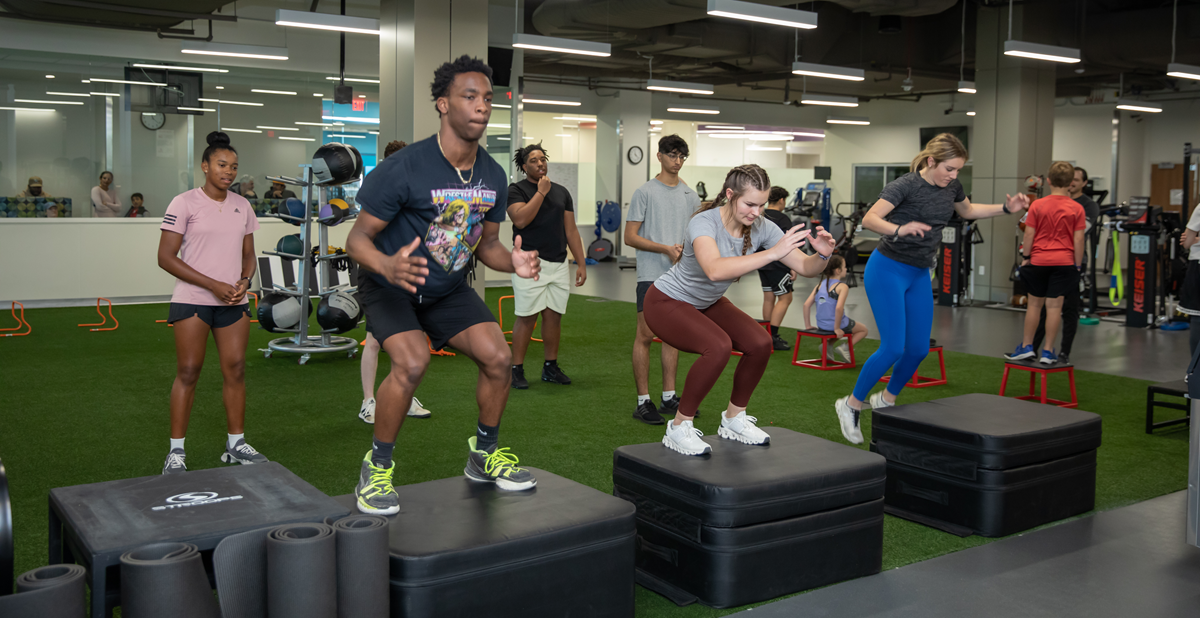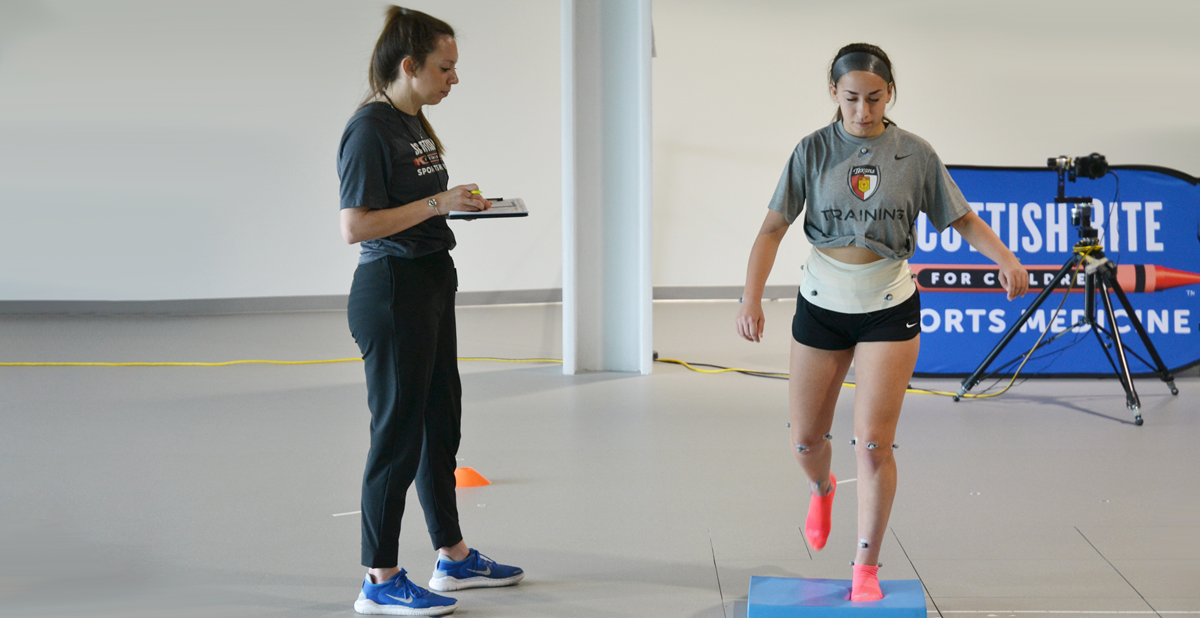
Nov 28, 2022 / Sports Medicine
Moment of Impact: Keeping Young Athletes SAFE
Article previously published in Rite Up, 2022 – Issue 3.
What if you could prevent a sports injury before it happens? That is exactly what the experts in the Center for Excellence in Sports Medicine at Scottish Rite for Children aim to achieve. Led by Sophia Ulman, Ph.D., the SAFE (Sports-specific Assessment and Functional Evaluation) program uses 3D motion capture technology — the same technology used to create special effects in movies and video games — to assess injury risk by studying the movements of young athletes.
The goal of the SAFE program is to develop injury prevention tools that will reduce sport-related injuries in young athletes here and beyond, creating a new standard of care. “Current injury prevention methods are falling short, as sports injuries in young athletes are skyrocketing,” Ulman says. “We are the first to use machine learning techniques to assess a young athlete’s risk for injury by considering risk factors, such as movement characteristics, demographics, sports participation characteristics, psychological measures, nutrition and sleep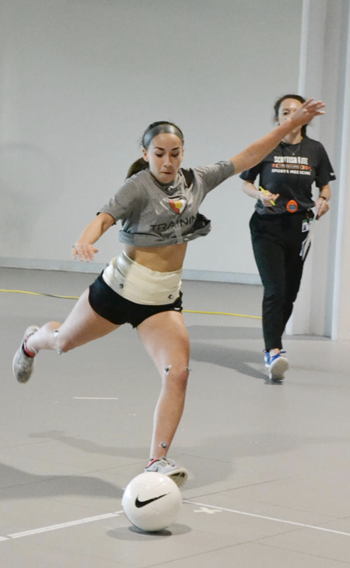 patterns.”
patterns.”
Uninjured athletes are invited to Scottish Rite’s Movement Science Laboratory, where they are fitted with reflective markers. The markers are used to collect the athlete’s movement patterns to evaluate their mobility, speed, agility and power in 3D. Participants are asked to jump, squat, run, pivot and perform sport specific movements like penalty kicks, layups or back handsprings. “The data is analyzed to learn more about how young athletes move and to determine if certain movement patterns lead to future sports injuries that would require treatment,” Ulman says.
The SAFE program has tested the movements of approximately 340 athletes across sports, such as baseball, basketball, gymnastics, softball, track and more. “After initial testing, we follow athletes for one year and note if any athlete experiences an injury,” Ulman says. “This data is helping us compare the movements of athletes who remained healthy versus athletes who were subsequently injured to determine what may have led to the injury.”
Researchers at Scottish Rite have already identified findings that might help predict injury risk in young athletes. “We have found that current tools for assessing injuries of the knee may be unreliable in some instances,” Ulman says. “Current methods commonly rely on 2D video to assess injury risk, but our research using 3D modeling is identifying potential risk factors that the 2D assessment cannot.” Through this innovative program, Scottish Rite researchers collaborate with medical professionals and sports medicine experts across the field to advance the treatment of young athletes throughout the country.
The SAFE program is poised to change the way health care professionals assess athletes for injury risk and, best of all, will help keep young athletes in the game.
To learn more about Movement Science, please call 469-515-7160 or email MSL.Frisco@tsrh.org.
Read the full issue.
What if you could prevent a sports injury before it happens? That is exactly what the experts in the Center for Excellence in Sports Medicine at Scottish Rite for Children aim to achieve. Led by Sophia Ulman, Ph.D., the SAFE (Sports-specific Assessment and Functional Evaluation) program uses 3D motion capture technology — the same technology used to create special effects in movies and video games — to assess injury risk by studying the movements of young athletes.
The goal of the SAFE program is to develop injury prevention tools that will reduce sport-related injuries in young athletes here and beyond, creating a new standard of care. “Current injury prevention methods are falling short, as sports injuries in young athletes are skyrocketing,” Ulman says. “We are the first to use machine learning techniques to assess a young athlete’s risk for injury by considering risk factors, such as movement characteristics, demographics, sports participation characteristics, psychological measures, nutrition and sleep
 patterns.”
patterns.”Uninjured athletes are invited to Scottish Rite’s Movement Science Laboratory, where they are fitted with reflective markers. The markers are used to collect the athlete’s movement patterns to evaluate their mobility, speed, agility and power in 3D. Participants are asked to jump, squat, run, pivot and perform sport specific movements like penalty kicks, layups or back handsprings. “The data is analyzed to learn more about how young athletes move and to determine if certain movement patterns lead to future sports injuries that would require treatment,” Ulman says.
The SAFE program has tested the movements of approximately 340 athletes across sports, such as baseball, basketball, gymnastics, softball, track and more. “After initial testing, we follow athletes for one year and note if any athlete experiences an injury,” Ulman says. “This data is helping us compare the movements of athletes who remained healthy versus athletes who were subsequently injured to determine what may have led to the injury.”
Researchers at Scottish Rite have already identified findings that might help predict injury risk in young athletes. “We have found that current tools for assessing injuries of the knee may be unreliable in some instances,” Ulman says. “Current methods commonly rely on 2D video to assess injury risk, but our research using 3D modeling is identifying potential risk factors that the 2D assessment cannot.” Through this innovative program, Scottish Rite researchers collaborate with medical professionals and sports medicine experts across the field to advance the treatment of young athletes throughout the country.
The SAFE program is poised to change the way health care professionals assess athletes for injury risk and, best of all, will help keep young athletes in the game.
To learn more about Movement Science, please call 469-515-7160 or email MSL.Frisco@tsrh.org.
Read the full issue.
